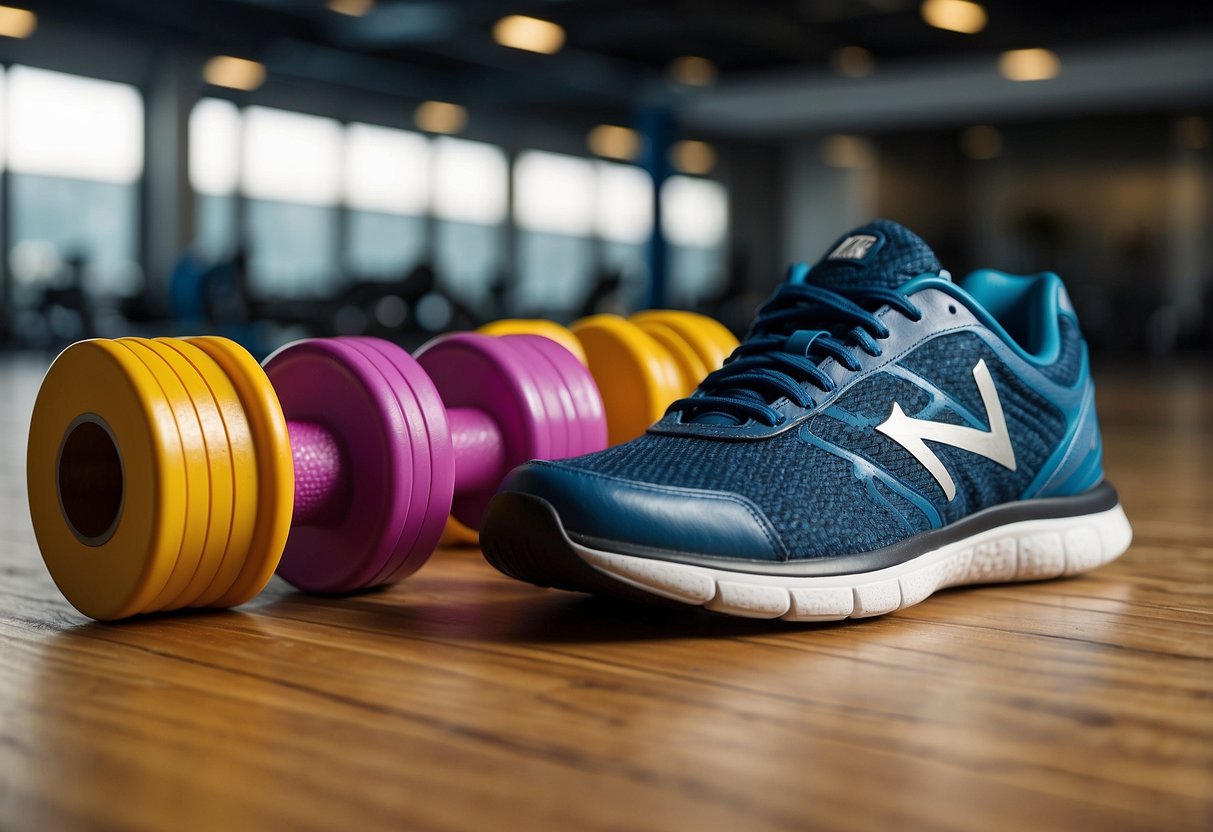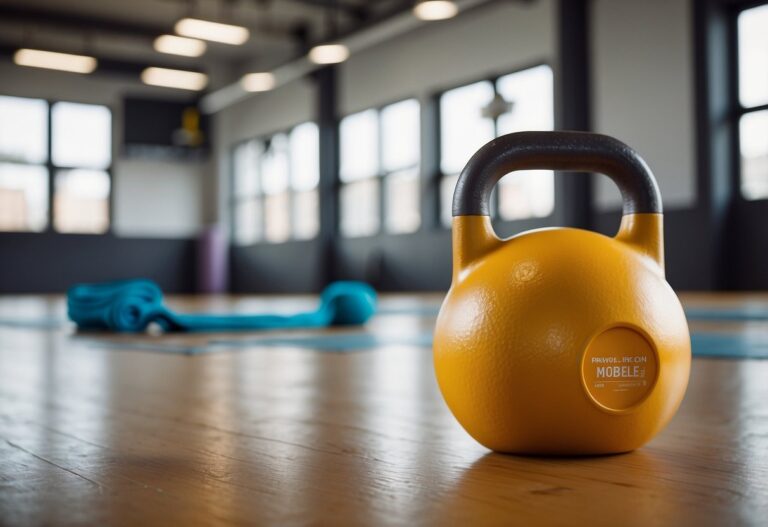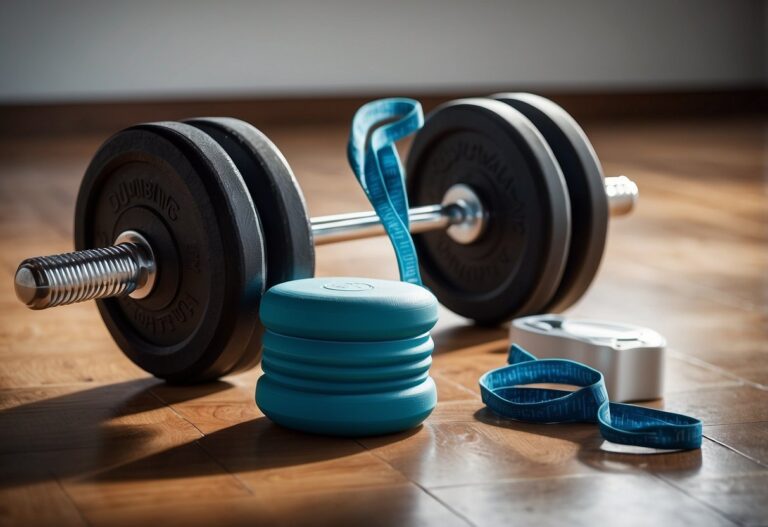Starting a workout routine can feel overwhelming, especially if you’re new to exercise. You might worry about where to begin or what kind of exercises are best for your goals. The key is to find a plan that fits your lifestyle and is easy to stick with over time.

It’s important to remember that everyone’s fitness journey is unique. Some people might enjoy going to the gym, while others prefer working out at home or joining a sports team. What’s crucial is that you choose activities you enjoy, making it easier to stay motivated and consistent.
Set Clear Goals
When you start working out, setting clear goals is essential. Know what you want to achieve, whether it’s losing weight, building muscle, or improving endurance. These targets will give you direction and keep you motivated.
Make your goals specific and measurable. For example, aim to run a 5k in under 30 minutes or do 10 push-ups without stopping. This clarity helps track your progress.
Allow some flexibility. Life happens, and sometimes you might need to adjust your goals. Being adaptable while keeping your main aim in view is key to long-term success.
Start Slowly and Build Up

When you’re just starting out, it’s essential to take it slow. Jumping into intense workouts can lead to burnout or injury. Begin with light exercises, like a brisk walk or gentle stretches.
Imagine you’re preparing your body like you would warm up an engine. A 5-10 minute warm-up with light cardio can help increase your heart rate gradually.
Set small, achievable goals. If you can only do a few push-ups, that’s okay. Focus on getting better each time. By doing this, you’ll avoid frustration and stay motivated to continue.
Mix Cardio and Strength Training
A great way to stay fit is to combine cardio and strength training. Not only does this save time, but it also offers a well-rounded workout. Think about mixing exercises like running with weight lifting.
Try circuit training. Switch between strength and cardio exercises. For example, do a strength exercise for one minute, then do 30 seconds of cardio. Repeat this for a few rounds.
Another method is to integrate cardio into strength workouts. For instance, add burpees or jumping jacks between sets of weightlifting. This keeps your heart rate up and adds an extra challenge.
Remember, finding the right balance is key. Listen to your body and adjust the intensity and duration of your workouts accordingly. Happy training!
To learn more about combining these exercises, check out this guide on circuit training.
Warm Up and Cool Down
Before you dive into your workout, it’s important to start with a warm-up. Spend 5 to 10 minutes doing light aerobic exercises like brisk walking, marching on the spot, or jogging slowly. This helps to loosen up your muscles and get your heart rate up.
Incorporate some dynamic stretches, such as walking lunges or jumping jacks. These movements warm up your muscles and prepare your body for more intense activity.
After your workout, take time to cool down. Slow down your pace for 5 to 10 minutes with light activity like walking. This helps your heart rate return to normal gradually.
Adding stretching exercises during your cool-down can also help relax and lengthen your muscles. Hold each stretch for 10 to 30 seconds to improve your flexibility and reduce muscle soreness.
Stay Hydrated
It’s important to stay hydrated when you start working out. Drinking enough water helps your body perform better and can help you avoid feeling dizzy or tired.
Before your workout, drink about 16 to 24 ounces of water. This is roughly half a litre. It helps ensure you’re starting off hydrated.
During the workout, take small sips of water every 15 to 20 minutes. A hydration pack or a water bottle can make this easier.
After your workout, aim to drink another 16 ounces of water. This helps replace the fluids you’ve lost through sweat.
Don’t wait until you’re thirsty to drink. Thirst is a sign that your body is already getting dehydrated. Make hydration a habit, not an afterthought.
Consider adding an electrolyte drink or supplement if you sweat a lot. These can help replenish lost minerals and keep your performance at its best.
Remember, everyone’s hydration needs are different. Listen to your body and adjust your water intake as needed.
Track Your Progress
Tracking your progress helps you stay motivated and see how far you’ve come. Start by keeping a workout journal. You can write down the date, the exercises you did, and how you felt. Using an app like Fitbod can make this easier.
Take progress photos. These show how your body changes over time. Compare them side by side every few weeks to notice differences.
Pay attention to how your clothes fit. Looser clothes mean you’ve lost weight, and tighter clothes may indicate muscle gain.
Remember, tracking isn’t just about physical changes. Note how your energy levels and strength improve too. It all adds up to show your hard work.
Find a Workout Buddy

If you’re looking to make working out more fun and less like a chore, consider finding a workout buddy.
Start by asking your close friends or family members if they’re interested. Sometimes, the people closest to you can be the best partners to motivate you.
Look for someone at your local gym. Just saying hello to someone who is regularly there can lead to a new workout partnership.
You can also use social media. Post about your fitness goals and ask if anyone wants to join you. This can connect you with people who have similar interests.
Joining a fitness class is another great way to meet a workout buddy. Classes often attract people looking to make new fitness connections.
For those who prefer online tools, consider apps designed to help you find workout partners. These platforms can match you with people who share your goals and schedule.
Having a workout buddy helps keep you accountable and makes exercise more social and fun.
Get Quality Sleep
Getting enough sleep is crucial for anyone starting a workout routine. When you sleep well, your body repairs itself and builds muscle.
Regular exercise can help improve your sleep quality. Activities like walking, running, or cycling are great choices. These aerobic exercises help you fall asleep faster and stay asleep longer.
Doing gentle exercises like yoga or tai chi can also help. These activities reduce stress and promote relaxation, making it easier to get the rest you need.
Consider aiming for at least one hour of exercise per week to see benefits in your sleep patterns.
Listen to Your Body
When you start working out, it’s important to listen to your body. If you feel pain or discomfort, it might be a sign to stop and rest. Recognising these signals can help you avoid injury and stay motivated.
Pay attention to your body’s basic signals. For instance, heavy breathing or muscle fatigue is normal. Sharp pain or dizziness is not. Understanding these signals can help you make better workout choices.
Take time to learn what your body is telling you. Are you unusually tired? Maybe you need more rest or water. Each person’s body is different, so listen to what yours is saying.
Before beginning any new exercise, ground yourself. This means tuning into your body’s needs and limitations. For more details, check out tips from Nike.
Paying attention helps you become more aware of how ready your body is for exercise. This not only reduces injury risks but also maximises workout benefits. Find more advice on this practice from Healthline.
Make sure to always challenge yourself, yet recognise when to step back. Feeling the burn can mean progress, but knowing when to pause is key. Discover more insights on this balance from Fitness Blender.
By tuning into your body’s signals, you make your workout safer and more effective. Always listen to what your body is saying, and adjust your workouts as needed.
Invest in Comfortable Workout Gear

Choosing the right workout gear can make a big difference in your fitness routine. Start with shoes that offer good support and fit well. Your feet should feel comfortable right from the start.
Next, look at clothes made from sweat-wicking fabric. This helps keep you dry by pulling moisture away from your body. This is especially useful during intense workouts.
Consider what you’ll be doing. If you’re lifting weights, opt for a thicker jersey material with a looser fit. For more active workouts, lighter, stretchy fabrics can be more comfortable.
Spending a bit more on high-quality gear can be worth it. It often lasts longer and fits better, making your workouts more enjoyable.
Think about your workout identity too. Wearing designated workout clothes can boost your motivation and make you feel ready to exercise.
Understanding Your Fitness Goals
To make it easier to stick with your fitness plan, it’s crucial to set clear goals and understand your motivations. This helps you focus and track your progress more effectively.
Setting Realistic Objectives
Crafting practical goals is key to your fitness journey. Start with SMART goals: Specific, Measurable, Achievable, Relevant, and Time-bound. Instead of saying, “I want to get fit,” aim for, “I plan to jog for 20 minutes, three times a week.”
Use a planner or calendar to chart out your daily, weekly, and monthly steps. For example, if your goal is to lose weight, set smaller milestones like losing one pound per week.
Balance different types of exercises. Incorporate cardiovascular activities, such as brisk walking or cycling, and strength training, like lunges, squats, and push-ups. This ensures a comprehensive workout plan that covers all aspects of fitness.
Identifying Your Motivations
Knowing why you want to get fit is just as important as knowing how. If you’re motivated by specific outcomes, such as wanting more energy or improving your health, write these down. Reflect on these motivations when you feel discouraged.
Think about personal stories or experiences that drive you. Perhaps you want to keep up with your kids or remember a loved one who faced health challenges. These personal ties can provide powerful motivation.
Also consider how fitness impacts other areas of your life. Improved mood, better sleep, and reduced stress are all common benefits. Recognising these connections can keep you committed to your fitness journey.
Choosing the Right Workout Regimen
Finding the perfect workout regimen is crucial for achieving your fitness goals. Your regimen should include a mix of cardiovascular exercises, strength training, and flexibility and mobility routines to ensure a balanced approach to fitness.
Cardiovascular Exercises
Cardiovascular exercises are key to improving heart health. These exercises include activities that increase your heart rate, such as running, cycling, and swimming. These workouts help burn calories and improve endurance.
Start with moderate-intensity activities, like brisk walking or light jogging, if you’re new to working out. Gradually increase the intensity or duration as your fitness improves. Aim for at least 150 minutes of moderate-intensity or 75 minutes of high-intensity cardio each week. Using a variety of exercises prevents boredom and keeps your routine interesting.
Strength Training
Strength training helps build muscle and improve bone density. This type of exercise involves using weights, resistance bands, or your body weight. Key exercises include squats, deadlifts, bench presses, and rows, targeting major muscle groups.
Start with lighter weights to learn proper form. As you get stronger, gradually increase the weight. A good starting point is two to three sessions per week, with one day of rest in between. Each session should include 2-5 sets of 8-12 reps per exercise. Regularly changing your routine can help prevent plateaus and keep your muscles challenged.
Flexibility and Mobility
Flexibility and mobility exercises help improve the range of motion in your joints. This reduces the risk of injuries and enhances overall performance in other workouts. These exercises include stretching, yoga, and foam rolling.
Incorporate dynamic stretches at the beginning of your workout to warm up your muscles and static stretches at the end to cool down. Yoga is also excellent for improving flexibility and reducing stress. Aim to include flexibility and mobility work at least two to three times a week. Consistency is key to seeing improvements in your range of motion and overall flexibility.







